
Concept explainers
Fill in the lettered reagents needed for each reaction.
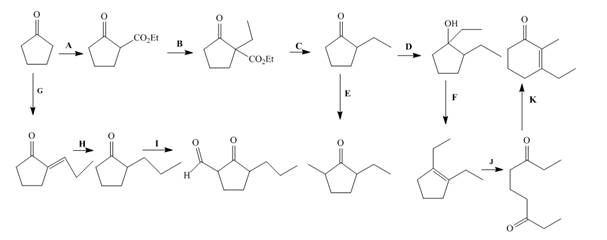
Interpretation: The lettered reagents that are needed for the given reactions are to be shown.
Concept Introduction: In crossed claisen condensation reaction, the base abstracts the acidic proton from
Answer to Problem 24.48P
The lettered reagents that are needed for the given reactions are shown below.
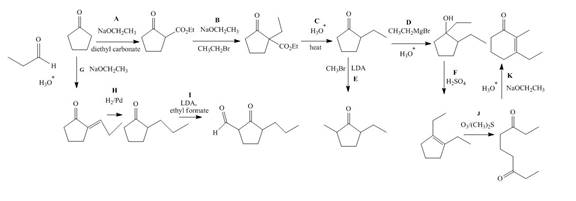
Explanation of Solution
The lettered reagent A is shown as,
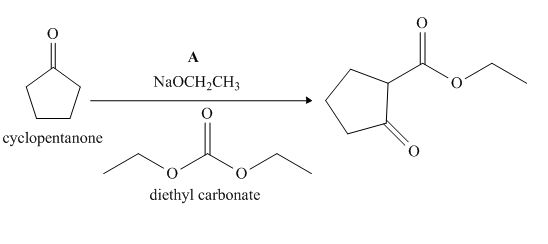
Figure 1
The given compound, cyclopentanone is treated with the base, sodium ethoxide that results in the formation of an enolate ion. Then, the enolate ion reacts with the compound, diethyl carbonate to form the desired compound,
The lettered reagent B is shown as,
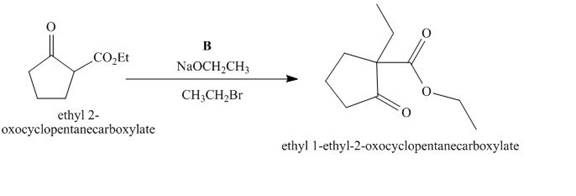
Figure 2
The compound,
The lettered reagent C is shown as,
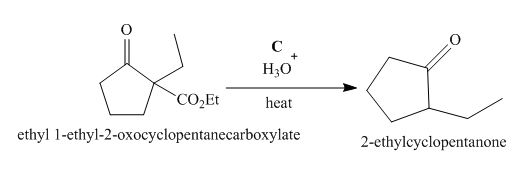
Figure 3
The compound,
The lettered reagent D is shown as,
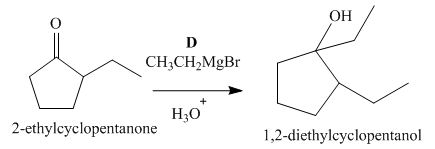
Figure 4
The compound,
The lettered reagent E is shown as,
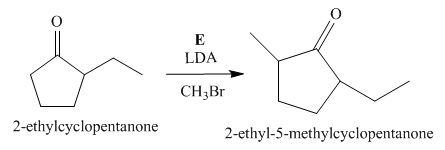
Figure 5
The compound,
The lettered reagent F is shown as,
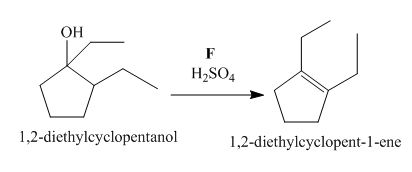
Figure 6
The compound,
The lettered reagent G is shown as,

Figure 7
The given compound, cyclopentanone is treated with the base, sodium ethoxide that results in the formation of an enolate ion. Then, the enolate ion reacts with the compound, propanal to form the compound,
The lettered reagent H is shown as,
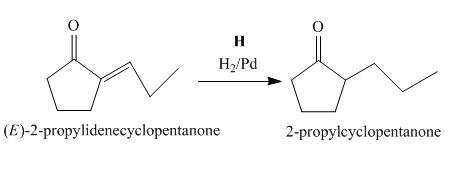
Figure 8
The compound,
The lettered reagent I is shown as,

Figure 9
The compound,
The lettered reagent J is shown as,
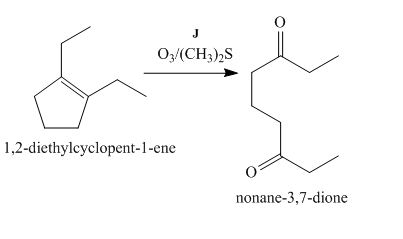
Figure 10
The compound,
The lettered reagent K is shown as,
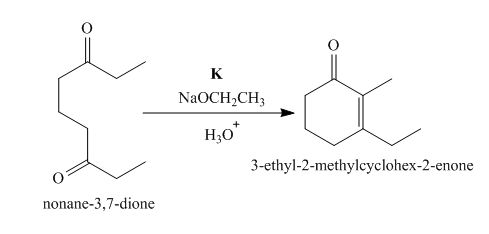
Figure 11
The intramolecular aldol reaction takes place in the compound,
The complete filled reagents that are needed for the given reactions are shown as,
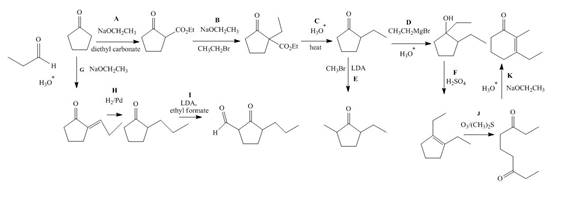
Figure 12
The lettered reagents that are needed for the given reactions are shown in Figure 12.
Want to see more full solutions like this?
Chapter 24 Solutions
Package: Loose Leaf for Organic Chemistry with Biological Topics with Connect Access Card
- In an experiment, the viscosity of water was measured at different temperatures and the table was constructed from the data obtained. a) Calculate the activation energy of viscous flow (kJ/mol). b) Calculate the viscosity at 30°C. T/°C 0 20 40 60 80 η/cpoise 1,972 1,005 0,656 0,469 0,356arrow_forwardDon't used Ai solutionarrow_forwardLet's see if you caught the essentials of the animation. What is the valence value of carbon? a) 4 b) 2 c) 8 d) 6arrow_forward
- A laser emits a line at 632.8 nm. If the cavity is 12 cm long, how many modes oscillate in the cavity? How long does it take for the radiation to travel the entire cavity? What is the frequency difference between 2 consecutive modes?(refractive index of the medium n = 1).arrow_forwardA laser emits a line at 632.8 nm. If the cavity is 12 cm long, how many modes oscillate in the cavity? How long does it take for the radiation to travel the entire cavity? What is the frequency difference between 2 consecutive modes?(refractive index of the medium n = 1).arrow_forwardThe number of microstates corresponding to each macrostate is given by N. The dominant macrostate or configuration of a system is the macrostate with the greatest weight W. Are both statements correct?arrow_forward
- For the single step reaction: A + B → 2C + 25 kJ If the activation energy for this reaction is 35.8 kJ, sketch an energy vs. reaction coordinate diagram for this reaction. Be sure to label the following on your diagram: each of the axes, reactant compounds and product compounds, enthalpy of reaction, activation energy of the forward reaction with the correct value, activation energy of the backwards reaction with the correct value and the transition state. In the same sketch you drew, after the addition of a homogeneous catalyst, show how it would change the graph. Label any new line "catalyst" and label any new activation energy.arrow_forwardHow many grams of C are combined with 3.75 ✕ 1023 atoms of H in the compound C5H12?arrow_forwarde. f. CH3O. יון Br NaOCH3 OCH 3 Br H₂Oarrow_forward
 Organic Chemistry: A Guided InquiryChemistryISBN:9780618974122Author:Andrei StraumanisPublisher:Cengage Learning
Organic Chemistry: A Guided InquiryChemistryISBN:9780618974122Author:Andrei StraumanisPublisher:Cengage Learning

